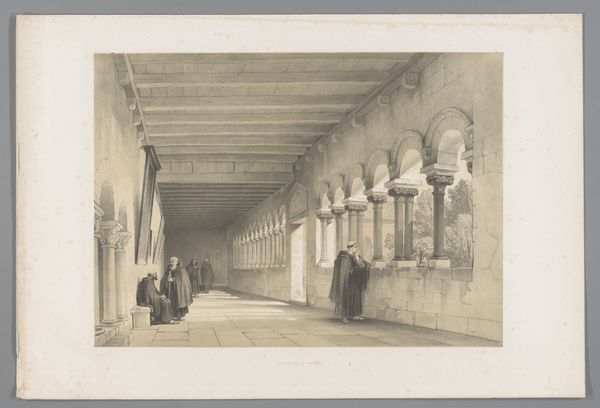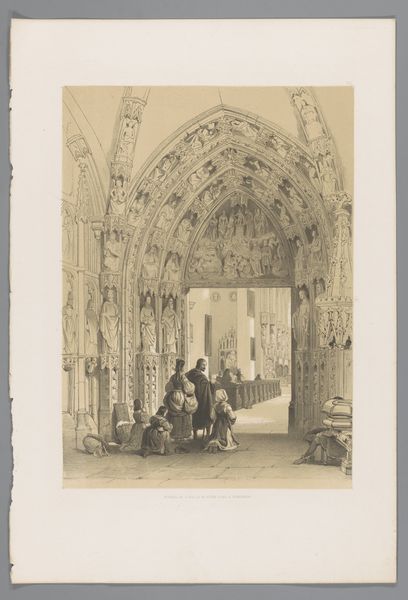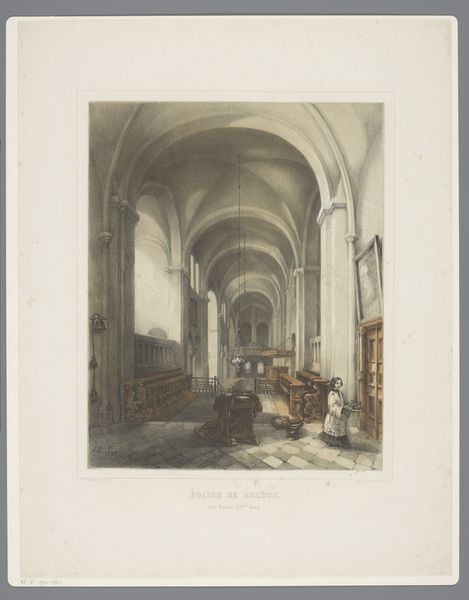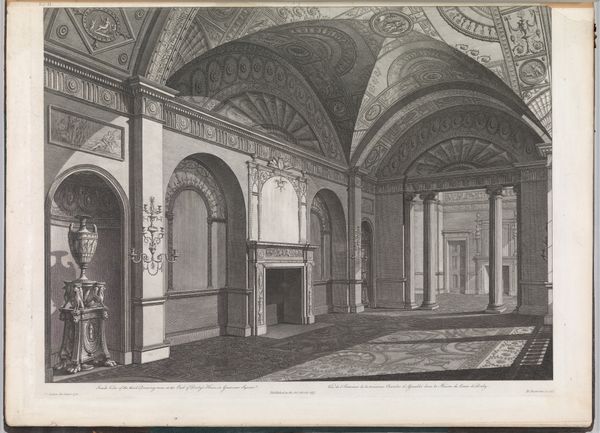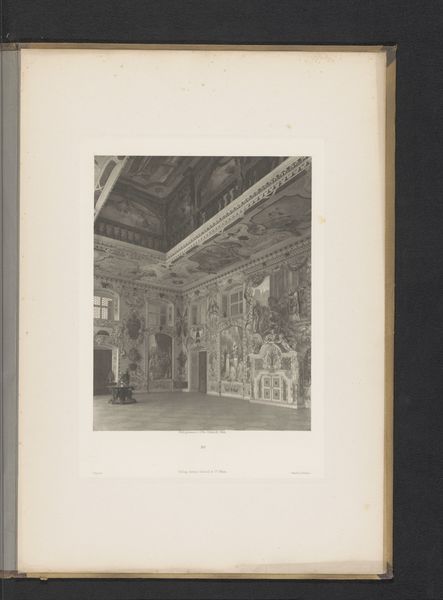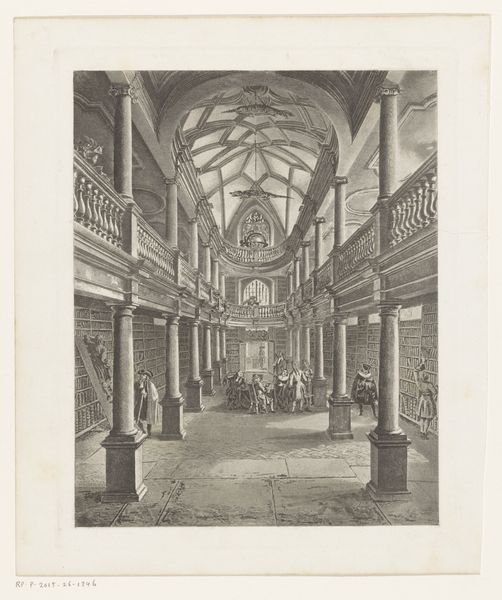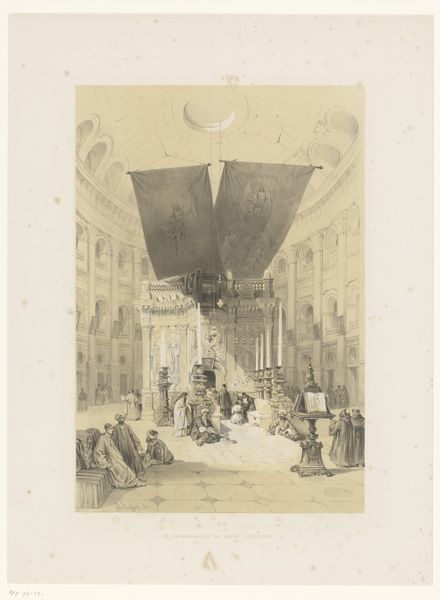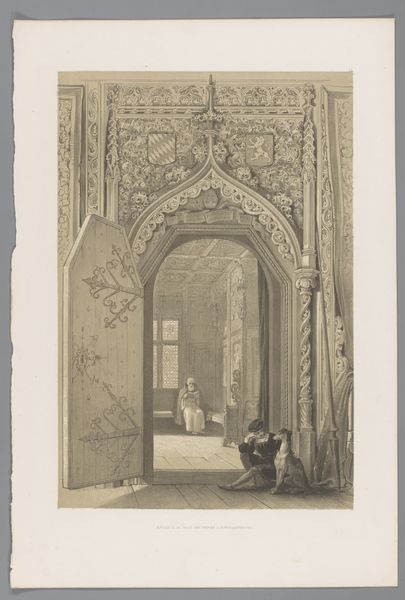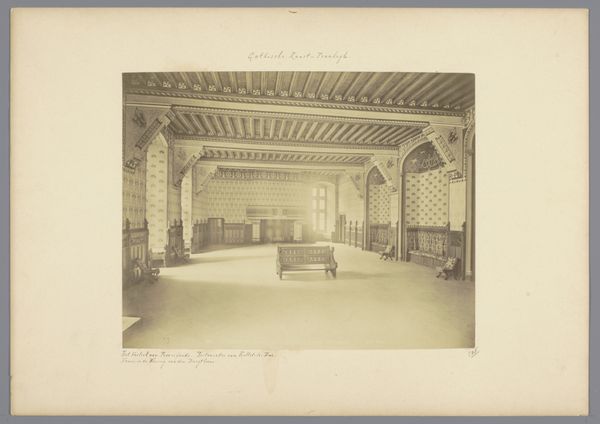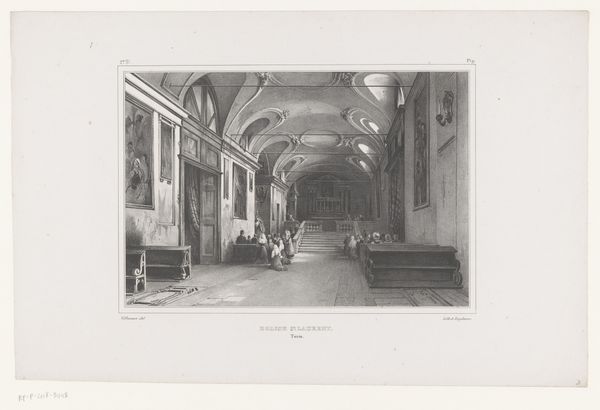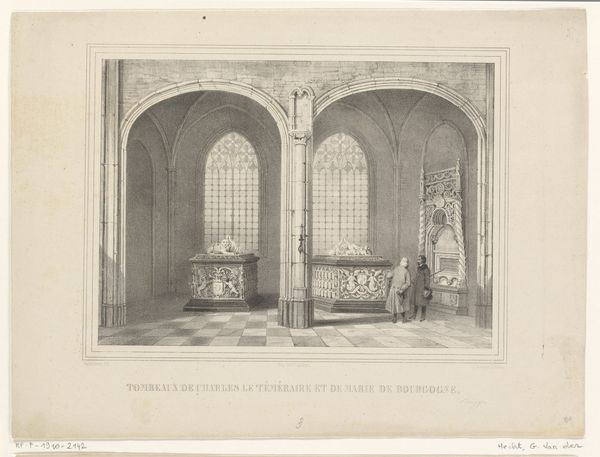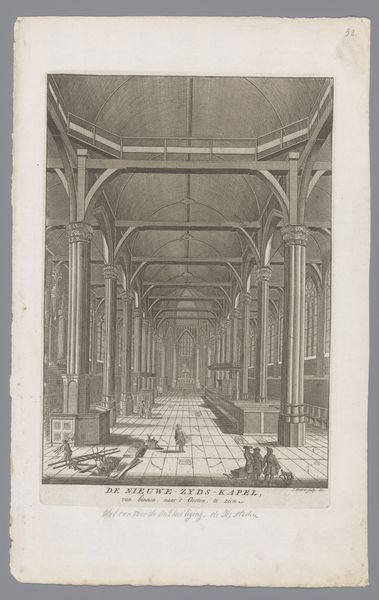
12. Intérieur, Mosquée d’Ibn Toûloûn 1843
0:00
0:00
drawing, print, engraving
#
drawing
# print
#
landscape
#
islamic-art
#
engraving
Dimensions: Sheet: 22 3/8 × 15 5/8 in. (56.9 × 39.7 cm)
Copyright: Public Domain
Curator: Let's discuss Joseph-Philibert Girault de Prangey's 1843 engraving, "Interior, Mosque of Ibn Tulun", currently residing at the Metropolitan Museum of Art. Editor: My goodness, what an echo chamber of solemnity and grandeur. It whispers of age and quiet contemplation, a sense of people finding peace within ancient stones. It feels... reverent. Curator: Indeed. Girault de Prangey was quite interested in documenting the architectural and cultural landscape of the Middle East in the 19th century. This engraving provides a vital visual record, highlighting not only the Mosque’s structural majesty, but also daily life within its walls. We see people engaged in prayer and study. Editor: I am so curious about the men clustered on the left! Is that a teacher among them? You can feel a very tangible exchange of ideas, it feels like you can overhear their discussions about theology, or architecture. They're at a real nexus point within the Mosque! Curator: Precisely, those kinds of casual arrangements speak to the building’s everyday functions. This piece, being an engraving, allowed for a level of detailed replication, enabling its circulation to a wider European audience who may have had no other exposure to such sites. Consider its role in shaping European perceptions of Islamic architecture. Editor: It’s strange, because although it’s monochromatic, the patterns and the shadows give the architecture depth, an almost palpable sense of heat. Curator: Absolutely, note how Girault de Prangey used light and shadow to emphasize the scale and repetition of architectural features like arches and columns. It draws your eye down the length of the prayer hall. Editor: So, in essence, we're not just admiring pretty arches; we're confronting a constructed narrative, an exchange of visual information regarding architectural wonders of other regions of the globe! Curator: An insightful remark about the piece and its broader role as a transmitter of cultural information in the 19th century, yes!
Comments
No comments
Be the first to comment and join the conversation on the ultimate creative platform.
